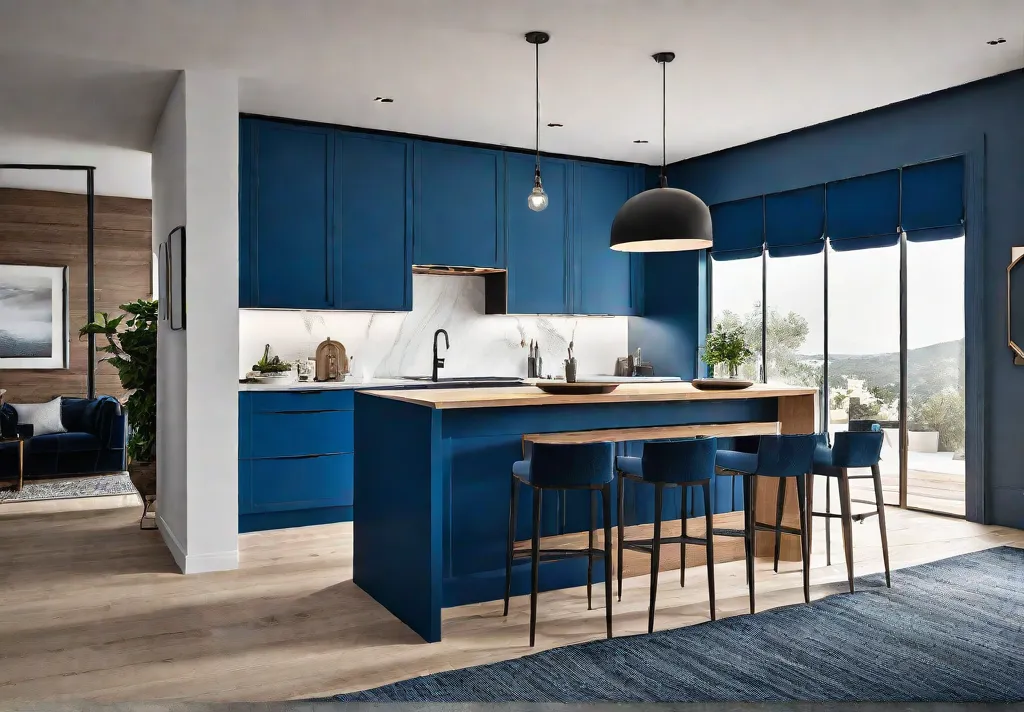As a home and garden specialist in New Jersey, I know firsthand how important the kitchen is to the overall vibe and functionality of a home. This space is the heart of the house - it's where we cook, gather, and create memories with loved ones. That's why I'm passionate about sharing simple yet effective ways to transform your kitchen into a space you'll love.
Whether you're a seasoned home renovator or just starting to dabble in interior design, I'm confident these ten effortless kitchen decor ideas will instantly elevate your space. From incorporating pops of vibrant color to maximizing storage and organization, we'll cover a wide range of strategies to cater to various styles and needs.
So, get ready to be inspired! Let's dive in and uncover how you can effortlessly revamp your kitchen and make it the envy of the neighborhood.
Incorporate Pops of Color
Adding pops of color is one of the quickest and most impactful ways to liven up your kitchen. Color has a powerful psychological effect - it can influence our mood, energy levels, and overall perception of a space. By carefully selecting hues that align with the atmosphere you want to create, you can instantly transform your kitchen into a vibrant, welcoming oasis.
Trending color palettes for kitchens these days include earthy tones like olive green, terracotta, and mustard yellow. These warm, cozy shades can instantly make your space feel more inviting. On the other hand, bold primary colors like red, blue, and yellow can inject a jolt of energy and excitement.
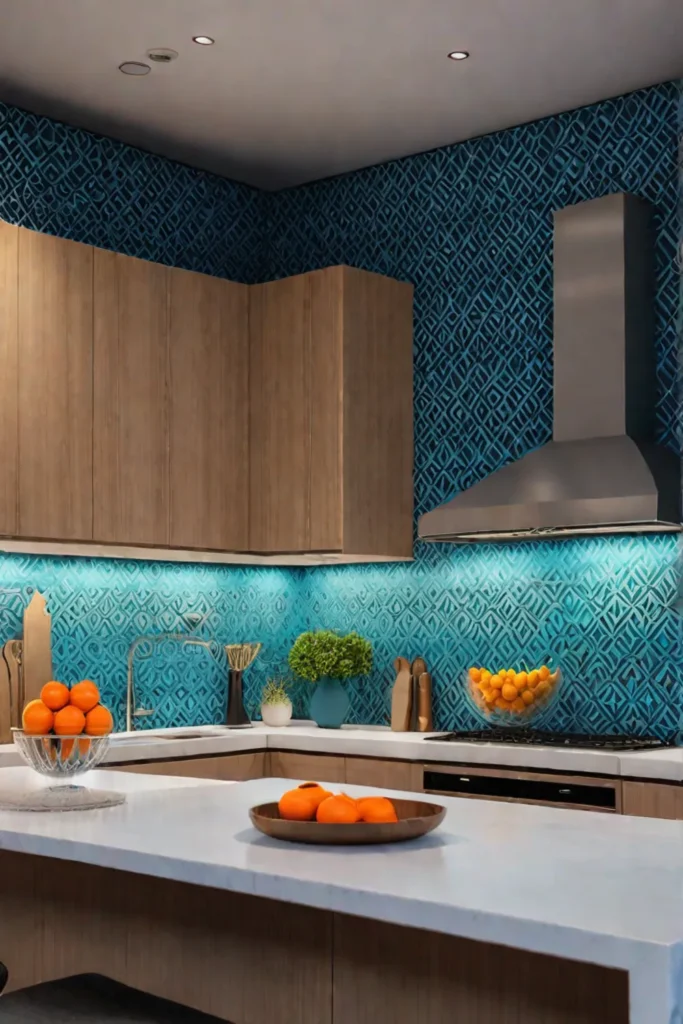
It's important to note that cultural and regional preferences also play a role in kitchen color choices. For example, Mediterranean-inspired kitchens often feature sunny, vibrant hues, while Asian-influenced designs may incorporate shades of red to symbolize luck and prosperity.
When it comes to incorporating pops of color, you have plenty of options. Consider adding a vibrant backsplash, updating your cabinet hardware, or swapping out your kitchen towels and accessories. Just be mindful of balancing those bold hues with neutral tones to avoid overwhelming the space. Start small and gradually build up your color scheme over time to ensure it seamlessly integrates with the rest of your home's aesthetic.
Maximize Storage and Organization
Efficient storage and organization are essential for a well-functioning kitchen. After all, this is the space where we spend a significant amount of time prepping, cooking, and cleaning up. By maximizing your storage solutions and keeping things tidy, you can not only improve the functionality of your kitchen but also enhance its overall appearance.
Over the years, kitchen storage has evolved from traditional cabinets to more contemporary options like open shelving and pull-out drawers. This shift reflects our changing lifestyles and the growing demand for streamlined, clutter-free living spaces.
Minimalist and decluttering trends have also significantly influenced kitchen design, encouraging homeowners to focus on the essentials and eliminate unnecessary items. By prioritizing simplicity and functionality, you can create a calming, productive environment that makes cooking and meal preparation a breeze.
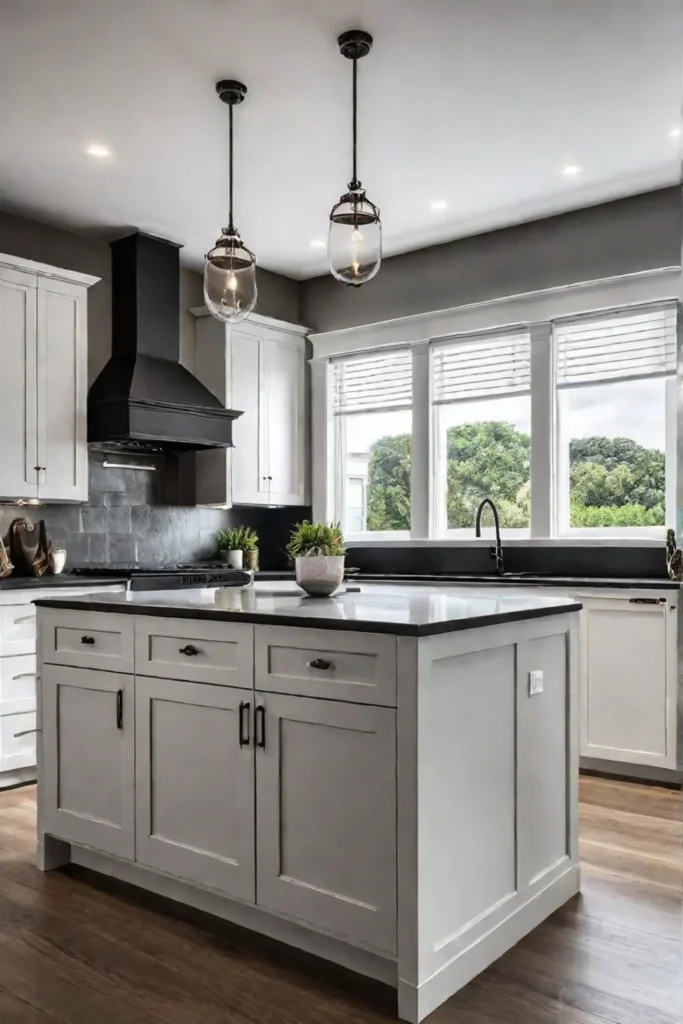
Innovative storage solutions like pull-out pantries and cabinet organizers can be game-changers for small kitchens. These clever ideas help you optimize every inch of available space and keep frequently used items within easy reach. In larger kitchens, built-in appliances, custom pull-out trays, and hanging pot racks can all contribute to a highly efficient and organized layout.
Don't be afraid to get creative with DIY storage solutions as well. Floating shelves, baking sheet holders, and pegboard backsplashes are just a few examples of how you can transform awkward spaces into functional, visually appealing storage areas.
By implementing these strategies and exploring innovative organizational tools, you can transform your kitchen into a clutter-free, user-friendly oasis that makes completing your daily tasks a pleasure.
Embrace Natural Materials
As a home and garden specialist, I'm a firm believer in the power of natural materials to elevate any kitchen design. Incorporating elements like wood, stone, and glass can instantly add warmth, texture, and a sense of timelessness to the space.
The growing popularity of natural materials in kitchen design reflects a broader shift towards more sustainable and eco-friendly living. Homeowners are increasingly seeking out materials that not only look beautiful but also contribute to a healthier, more environmentally conscious home.
Interestingly, the use of natural materials in kitchens has deep historical roots. In ancient times, the Romans used marble for their countertops, while the Egyptians favored limestone. Even in medieval Europe, oak was a common choice for cabinetry due to its durability and resistance to rot.
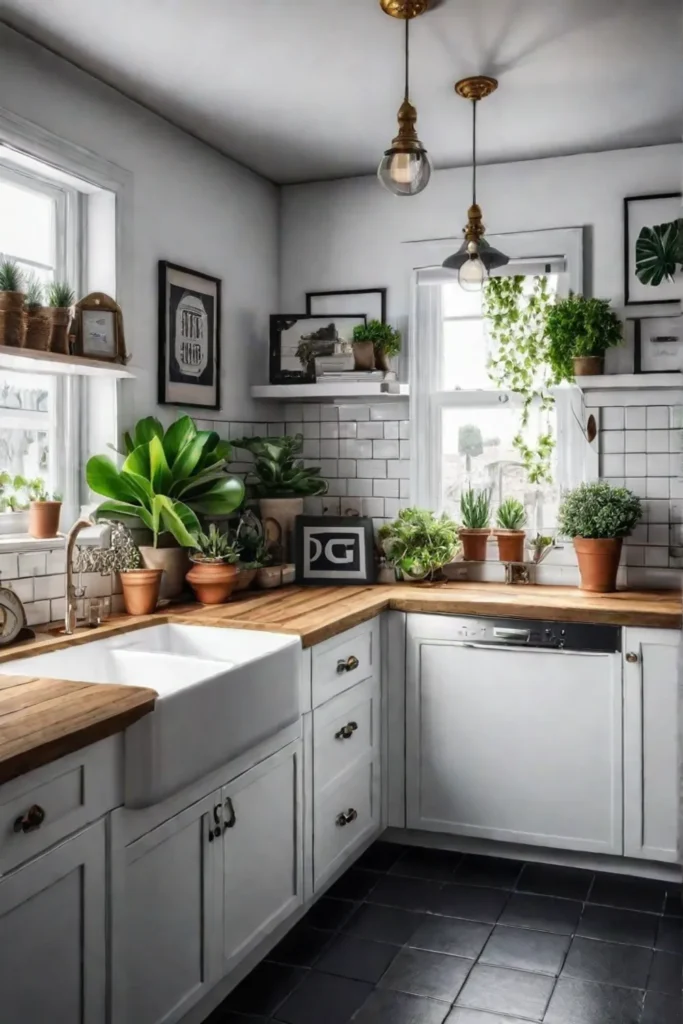
Today, we can blend these natural elements with modern kitchen design in stunning ways. For example, you might pair smooth, stainless steel appliances with a rustic wood island or complement sleek, white cabinets with a stunning soapstone countertop. The key is to find a harmonious balance between the natural and the contemporary, creating a space that feels both timeless and on-trend.
Of course, proper maintenance and care are essential when working with natural materials in the kitchen. Wood countertops require regular sealing, while stone surfaces need to be protected from acidic substances. By following the right care guidelines, you can ensure that your natural materials retain their beauty and functionality for years to come.
By embracing the warmth and character of natural materials, you can transform your kitchen into a serene, nature-inspired oasis that reflects your commitment to sustainable living.
Introduce Unique Lighting Fixtures
Lighting plays a crucial role in setting the mood and atmosphere of a kitchen, making it an essential element in any well-designed space. By incorporating unique lighting fixtures, you can instantly elevate the look and feel of your kitchen while also improving its functionality.
Layered lighting is the key to creating a truly captivating kitchen. This approach involves combining different types of lighting, such as task lighting for food preparation, ambient lighting for overall illumination, and accent lighting to highlight architectural features or artwork.
Some of the latest trends in kitchen lighting include statement pendants and under-cabinet lighting. Large, eye-catching pendant fixtures suspended above an island or dining area can instantly become the focal point of the room, adding a dramatic flair. Meanwhile, discreet under-cabinet lighting can beautifully illuminate your countertops, making tasks like chopping and dicing a breeze.
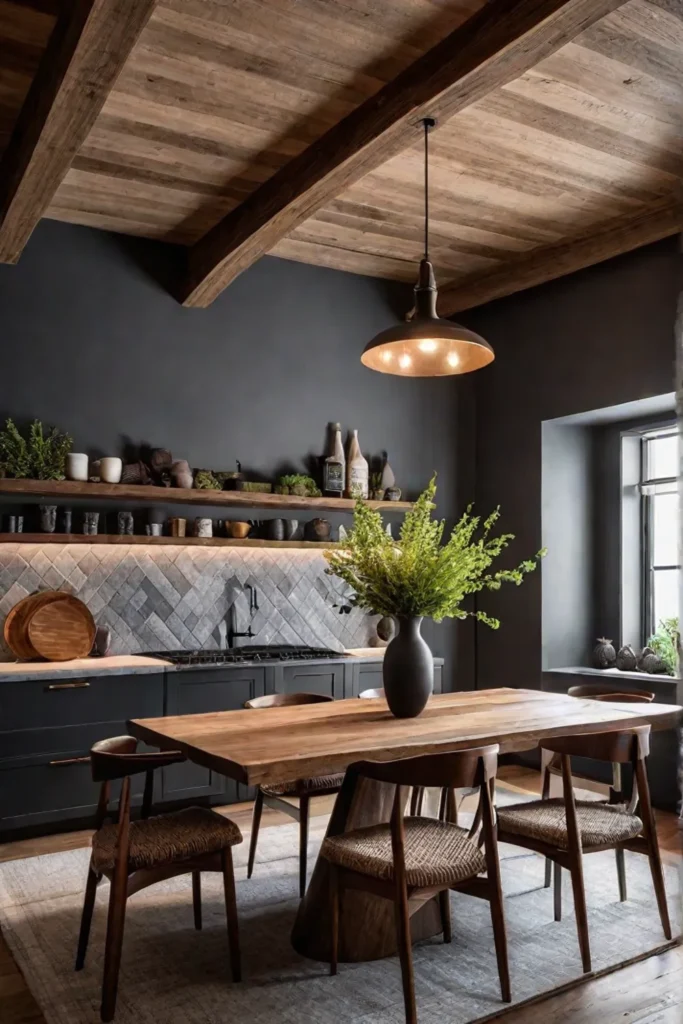
The history of kitchen lighting is also quite fascinating. In the early days, kitchens relied on open flames for illumination, eventually transitioning to gas lamps and then electric incandescent bulbs. Today, energy-efficient LED technology has revolutionized the way we light our kitchens, offering improved brightness and longevity.
Proper lighting can also significantly impact the perception of your kitchen's size and layout. Well-placed fixtures can make a space appear larger and more open, while strategic lighting can guide traffic flow and draw attention to specific areas.
When selecting lighting for your kitchen, consider the different zones and their respective needs. Task lighting should be focused on work surfaces, while ambient lighting should provide overall illumination. Accent lighting can highlight architectural features or artwork, adding depth and visual interest to the space.
Incorporating dimmable lighting options is also a great way to create versatility in your kitchen. You can adjust the brightness to suit your mood, from bright task lighting during meal preparation to soft, atmospheric lighting when entertaining guests.
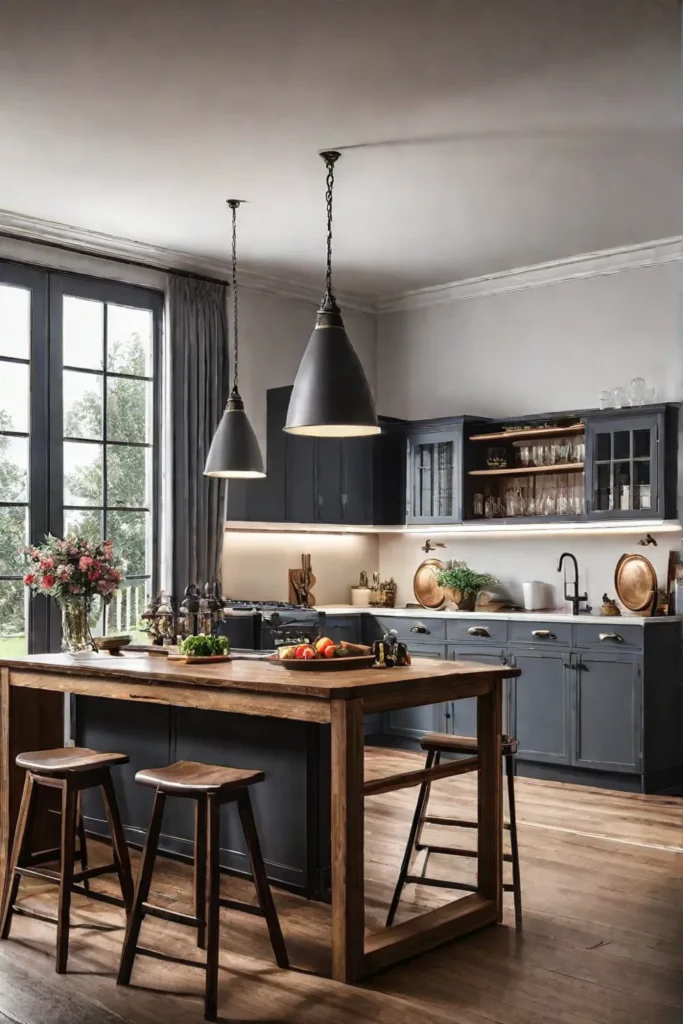
By thoughtfully incorporating unique lighting fixtures, you can transform your kitchen into a visually stunning and highly functional space that caters to all your needs.
Personalize with Artwork and Accessories
One of my favorite ways to add character and personality to a kitchen is by personalizing the space with artwork and accessories. These elements not only enhance the overall aesthetic but also reflect the homeowner's unique style and preferences.
Artwork and accessories play a crucial role in creating a cohesive and visually appealing kitchen design. Carefully selected pieces can help tie the entire room together, drawing the eye to specific focal points and adding depth and interest to the space.
When it comes to kitchen art and decor, current trends are all about blending functionality and aesthetics. Gallery walls featuring a mix of framed prints, photographs, and even vintage plates are popular, allowing homeowners to showcase their style. Statement pieces, such as a large painting or sculpture, can also serve as a conversation starter and anchor for the rest of the kitchen's decor.
Another way to inject warmth and texture into the kitchen is to incorporate natural elements, like potted plants and woven baskets. These organic touches not only look beautiful but also contribute to a healthier indoor environment by improving air quality.
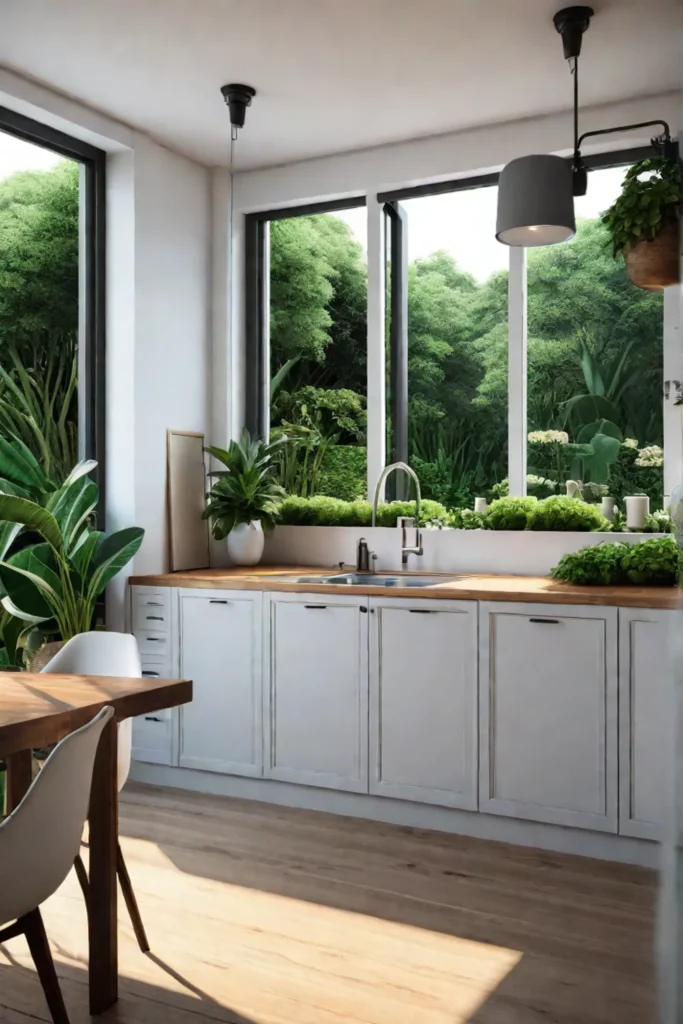
Interestingly, using artwork and accessories to enhance kitchen spaces has evolved. Historically, kitchens were primarily functional areas focused on cooking and food storage. However, as homes have become more open and integrated, kitchens have transformed into social hubs where family and friends gather. As a result, homeowners have started to view this space as an extension of their living area, leading to the incorporation of more decorative elements.
Studies have shown that surrounding ourselves with familiar objects and images can have a positive impact on our mood and well-being. By adding personal touches to your kitchen, you can create a sense of comfort and familiarity, fostering a relaxing and inviting atmosphere.
When selecting artwork and accessories, be mindful of balancing functionality and aesthetics. Choose pieces that not only look beautiful but also serve a practical purpose, such as a cutting board transformed into wall art or a hanging plant pot. This approach will help you create a kitchen that is both visually stunning and highly efficient.
Embrace Multifunctional Furniture
In today's world, where space is at a premium, incorporating multifunctional furniture into your kitchen design can be a game-changer. These versatile pieces not only optimize your available space but also improve the overall efficiency and functionality of the room.

One of the primary benefits of multifunctional furniture is its ability to provide additional storage. Many of these pieces come equipped with drawers, cabinets, or shelves, allowing you to keep your kitchen essentials organized and within easy reach. This is particularly valuable in smaller kitchens, where every square inch counts.
Versatility is another key advantage of multifunctional furniture. For instance, a convertible table can seamlessly transition from a breakfast nook to a workspace or even a bar setup, depending on your needs. Mobile kitchen islands on casters can be easily moved around to create more counter space or accommodate various cooking and entertaining activities.
The growing demand for small-space living has influenced the trend towards multifunctional kitchen furniture. As homeowners seek to maximize the functionality of their homes, designers have responded by creating innovative, space-saving solutions that blend form and function.
When selecting multifunctional furniture for your kitchen, it's essential to consider both the aesthetic and practical aspects. Choose pieces that not only complement your overall design scheme but also address your specific needs and lifestyle. Measure your kitchen dimensions carefully to ensure a seamless fit, and prioritize the features that are most important to you, such as storage capacity or convertibility.
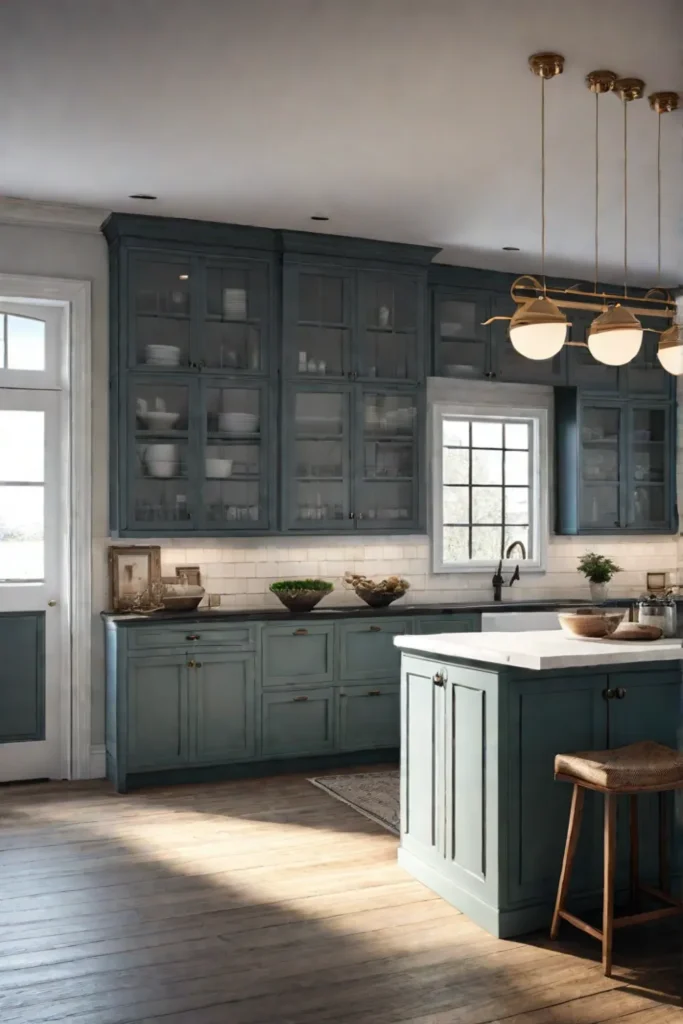
To prevent your kitchen from feeling cluttered or overwhelmed by multifunctional pieces, focus on incorporating key items that address your immediate needs. Opt for neutral colors and finishes that can easily integrate with your existing decor, and utilize vertical space whenever possible to maximize efficiency without compromising the visual appeal of the room.
By embracing multifunctional furniture, you can transform your kitchen into a highly efficient and versatile space that caters to your unique requirements and personal style.
Bring in Natural Greenery
One of the most effortless and impactful ways to elevate your kitchen decor is by incorporating natural greenery. Plants in this space not only enhance the overall aesthetic but also contribute to a healthier, more biophilic environment.
Bringing plants into the kitchen has numerous benefits. In addition to improving air quality by absorbing carbon dioxide and releasing oxygen, studies have shown that the presence of greenery can positively impact our mental well-being, reducing stress levels and boosting creativity.
When it comes to selecting the right plants for your kitchen, there are plenty of low-maintenance options. Snake plants, spider plants, and peace lilies are all excellent choices that thrive in the often humid kitchen environment. Herbs like basil, rosemary, and thyme are also practical and visually appealing, allowing you to incorporate fresh flavors into your cooking easily.

Historically, herb gardens have been a staple in kitchens, serving both culinary and medicinal purposes. The concept of biophilic design, which integrates nature into built environments, has further popularized the idea of bringing the outdoors in, particularly in spaces like the kitchen.
When it comes to placement, consider positioning your plants near windows that receive indirect sunlight, on countertops, or even hanging them from shelves. Just be mindful of the specific lighting and watering requirements of each plant to ensure they thrive in their new home.
By incorporating natural greenery into your kitchen, you can create a calming, rejuvenating atmosphere that seamlessly blends the outdoors with your indoor living space. Not only will this add a fresh, organic touch to the room, but it can also contribute to a healthier, more productive environment for you and your family.
Embrace Minimalism and Clean Lines
If you're looking to create a serene, uncluttered, and visually appealing kitchen, embracing minimalism and clean lines is the way to go. This design philosophy not only reduces visual noise but also promotes a sense of calm and focus, making the space feel more functional and efficient.
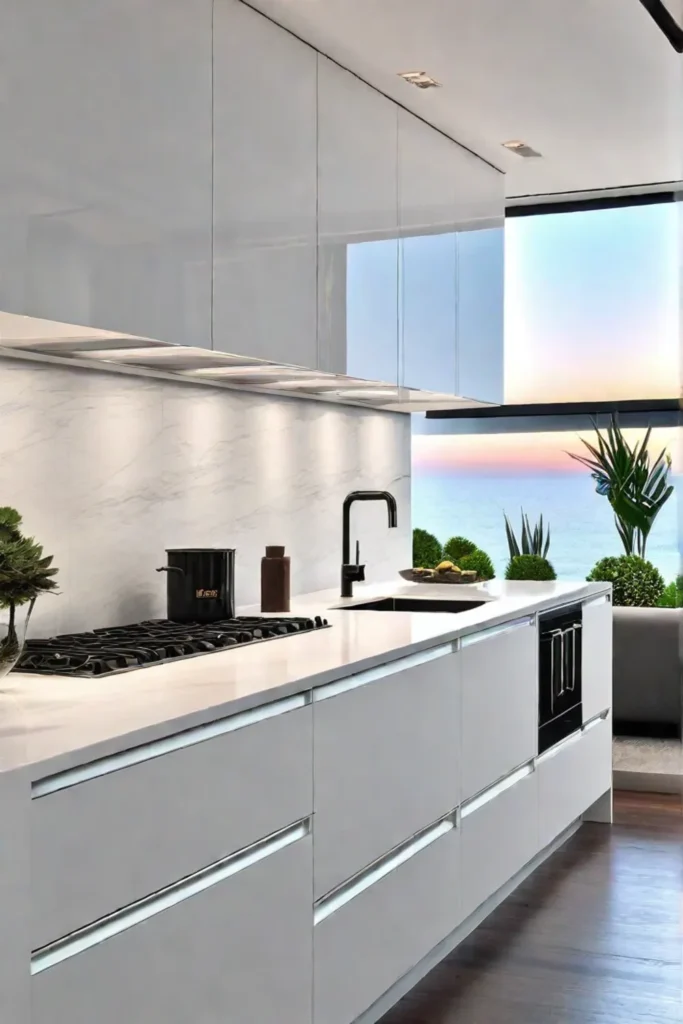
One of the primary benefits of a minimalist approach to kitchen design is the reduction of visual clutter. By eliminating unnecessary items and focusing on the essentials, you can create a space that feels more organized and easier to navigate. This, in turn, can have a positive impact on your overall productivity and well-being while you're working in the kitchen.
Trending minimalist design elements in contemporary kitchens include streamlined cabinetry with hidden hardware, integrated appliances that blend seamlessly into the surrounding surfaces, and monochromatic color schemes that exude a sense of sophistication and timelessness.
The roots of minimalist kitchen design can be traced back to various influential movements and styles, such as the Bauhaus school of thought, which emphasized simplicity, function, and form. The modern farmhouse aesthetic, which combines rustic charm with clean lines and neutral tones, is another example of how minimalism has been incorporated into traditional kitchen design.
To achieve a minimalist kitchen that aligns with your style and lifestyle, it's essential to strike a balance between form and function. Focus on curating only the necessary items you need, and utilize smart storage solutions to keep the space organized and clutter-free. Introduce subtle textures and natural materials to add warmth and visual interest without compromising the overall minimalist aesthetic.
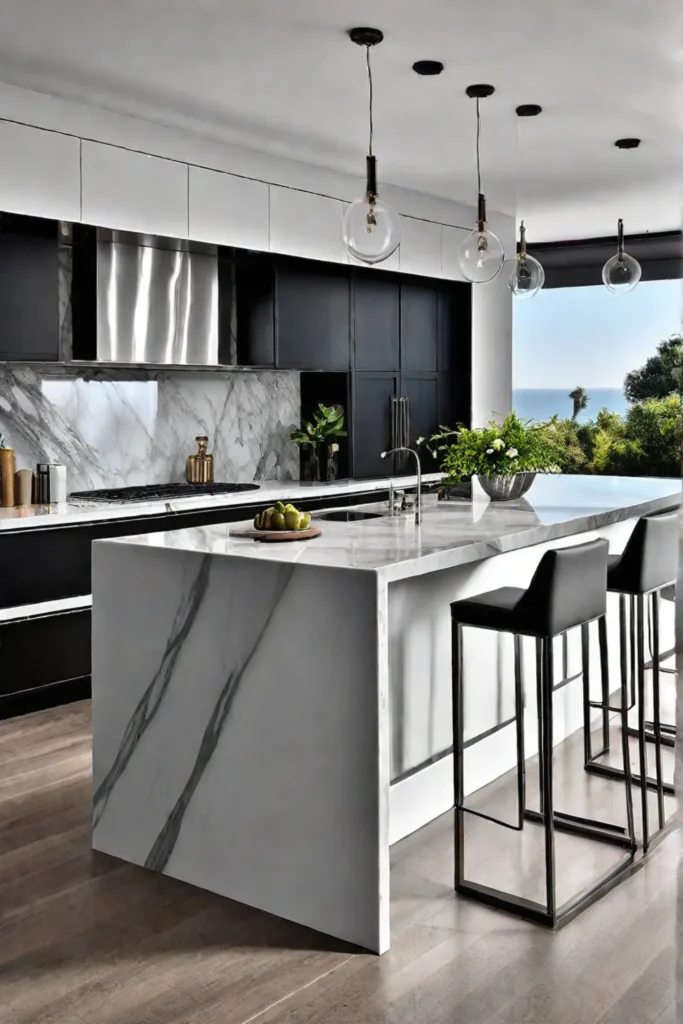
By embracing minimalism and clean lines in your kitchen design, you can create a serene, uncluttered, and visually appealing space that promotes focus, productivity, and a sense of calm – the perfect environment for whipping up delicious meals and entertaining guests.
Incorporate Texture and Contrast
Elevating the visual interest and depth of your kitchen can be as simple as incorporating texture and contrast. By blending different materials, finishes, and design elements, you can create a kitchen that is not only aesthetically pleasing but also warm and inviting.
Texture plays a crucial role in kitchen design, as it adds a tactile quality that can evoke a range of emotions and sensations. For example, the rough-hewn appearance of exposed wood beams or the cool, smooth surface of a marble countertop can contribute to a cozy, rustic ambiance. Conversely, the sleek, glossy finish of contemporary cabinetry or stainless steel appliances can exude a sense of sophistication and modernity.
The interplay of texture and contrast is a hallmark of many contemporary kitchen designs. By juxtaposing smooth and rough, matte and glossy, or natural and artificial materials, designers create a visually striking and harmonious space that captures the eye and engages the senses.
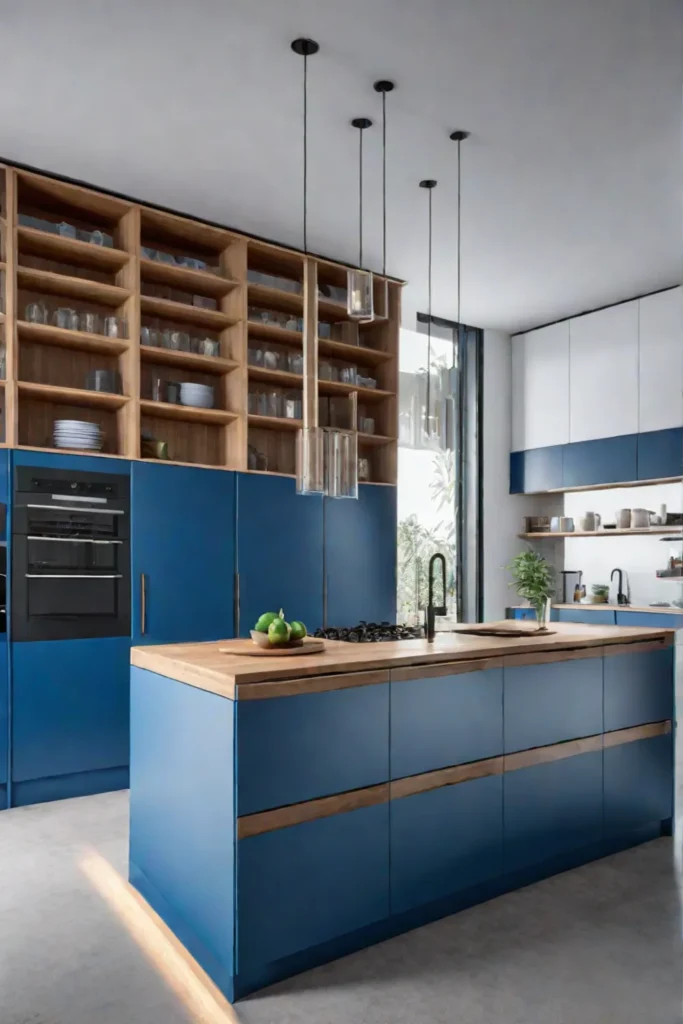
This design approach has evolved, reflecting broader shifts in architectural styles and cultural preferences. In the past, kitchens often featured rough-hewn wooden surfaces and useful materials, while the rise of modernist design in the mid-20th century ushered in an era of sleek, minimalist surfaces. Today, we see a blend of these elements, with homeowners seeking to create a balance between the warm, organic qualities of natural materials and the clean, streamlined aesthetic of modern design.
Incorporating texture and contrast into your kitchen doesn't have to be daunting. Start by layering different surfaces, such as pairing a smooth quartz countertop with a rustic wood island or introducing a statement light fixture with a unique, textural quality. Experiment with color and pattern as well, using accents and accessories to break up expanses of neutral tones and create visual interest.
By thoughtfully combining textures and contrasting elements, you can transform your kitchen into a visually captivating and tactilely engaging space that reflects your style and creates a warm, inviting atmosphere for you and your guests.
Optimize for Functionality and Efficiency
While a kitchen's aesthetic appeal is undoubtedly important, it's equally crucial to ensure that the space is designed for optimal functionality and efficiency. After all, the kitchen is the heart of the home, where we spend a significant amount of time cooking, prepping, and entertaining. By prioritizing both form and function, you can create a kitchen that not only looks stunning but also caters to your specific needs and lifestyle.
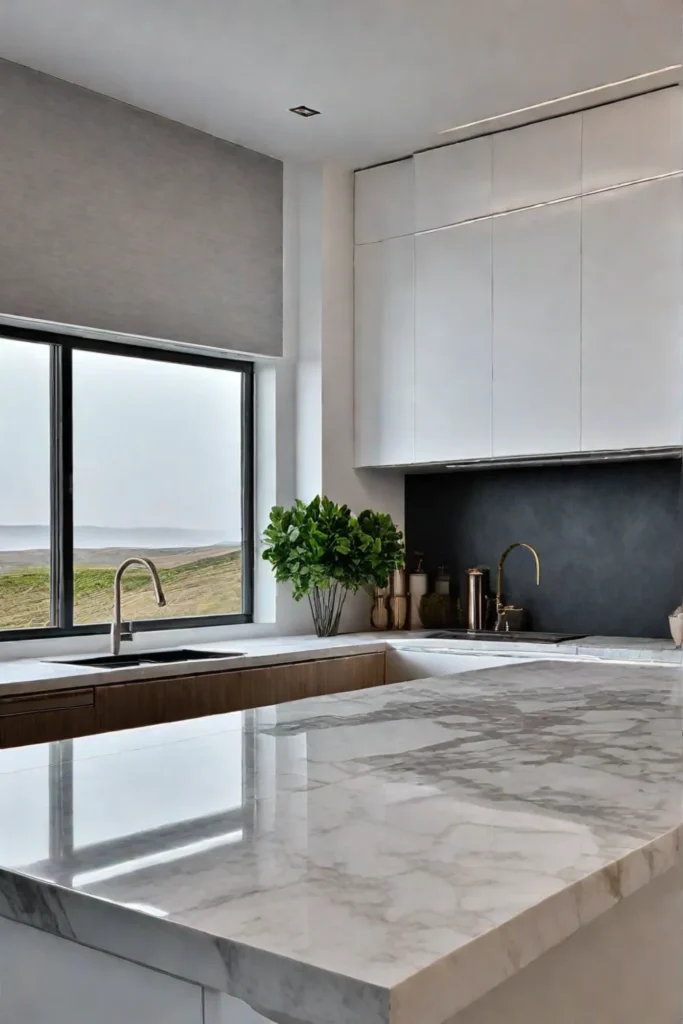
One key factor to consider when designing a highly functional kitchen is workflow. By carefully planning the layout and positioning of work zones, appliances, and storage areas, you can streamline tasks and improve productivity. This might involve grouping similar activities together, such as placing the sink, dishwasher, and prep area in close proximity or strategically placing frequently used items within easy reach.
Innovative design solutions and emerging technologies can also significantly enhance a kitchen's functionality and efficiency. From custom cabinetry and pull-out drawers to integrated smart home features like voice-controlled lighting and appliances, there are countless ways to optimize your kitchen for maximum convenience and ease of use.
Conclusion
In conclusion, transforming your kitchen into a stunning, functional, and inviting space doesn't have to be daunting. By incorporating these ten effortless kitchen decor ideas, you can instantly elevate your kitchen's look and feel while improving its overall efficiency and functionality.
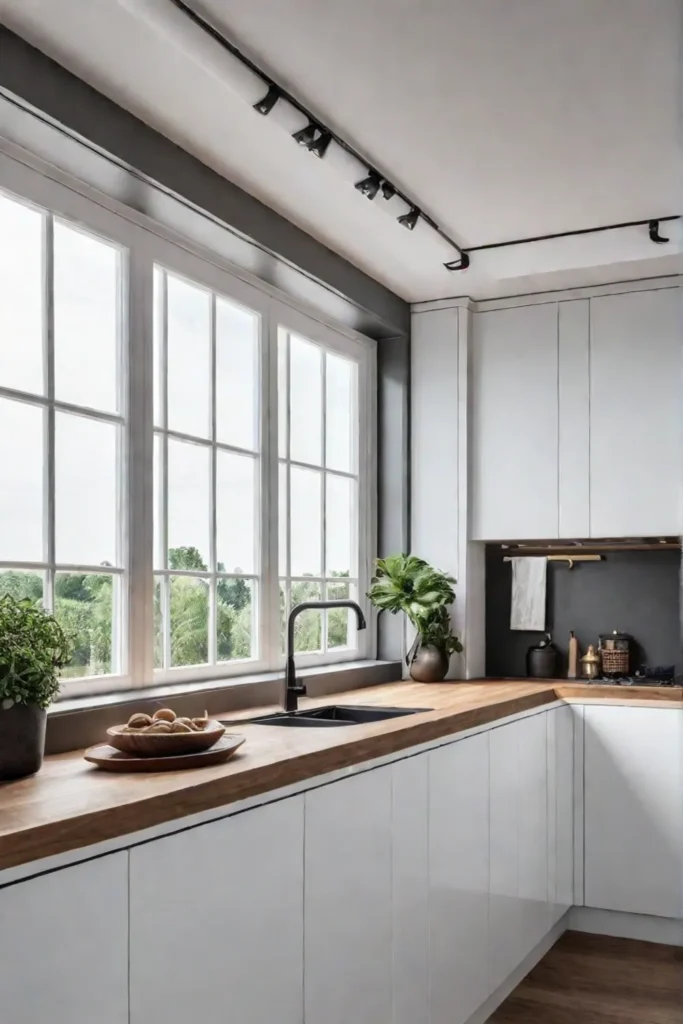
From embracing pops of vibrant color and natural materials to maximizing storage, personalizing with artwork, and optimizing workflow, these strategies offer various options to suit different styles and preferences. By thoughtfully blending form and function, you can create a kitchen that reflects your unique personality, supports your daily activities, and enhances your quality of life.
As you embark on your kitchen transformation journey, remember to prioritize your specific needs and lifestyle. Don't be afraid to experiment with different design elements and solutions until you find the perfect balance that works for you and your family.
